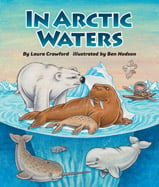Alignment to Standards for TN

| Grade | Number | Standard |
|---|---|---|
| 1 | SC-1.1.2. | Recognize that smaller parts of living things contribute to the operation and well being of entire organisms. |
| 1 | SC-1.10.2.a | Identify ways that earth resources benefit man. |
| 1 | SC-1.2.3. | Examine interrelationships among plants, animals, and their environment. |
| 1 | SC-1.2.3.a | Collect information about organisms that occupy specific environments. |
| 1 | SC-1.5.2. | Recognize that living things have features that help them to survive in different environments. |
| 1 | SC-1.5.2.a | Recognize the environment in which an organism is typically found. |
| 1 | SC-1.9.1.a | Distinguish between land and water environments. |
| 1 | SS-1.3.03.c | Compare/contrast natural and artificial features of the earth. |
| 2 | SC-2.2.2.a | Determine how animals interact with the living and non-living elements in their environment through the senses. |
| 2 | SC-2.2.3. | Examine interrelationships among plants, animals, and their environment. |
| 2 | SC-2.2.3.a | Determine how organisms interact with the non-living elements of their environment. |
| 2 | SC-2.4.1. | Recognize that living things reproduce. |
| 2 | SC-2.4.1.a | Recognize that all living things come from other living things. |
| 2 | SC-2.4.3. | Recognize that the appearance of plants and animals changes as they mature. |
| 2 | SC-2.4.3.a | Recognize that as an organism grows, its appearance may change. |
| 2 | SC-2.5.2. | Recognize that living things have features that help them to survive in different environments. |
| 2 | SC-2.5.2.a | Classify an organism according to the environment in which it can best survive. |
| 3 | SC-3.2.3. | plants and animals depend upon each other and the non-living elements of an environment to meet basic needs. |
| 3 | SC-3.2.3. | Examine interrelationships among plants, animals, and their environment. |
| 3 | SC-3.3.1.a | Explain how animals depend on plants to meet their need for energy. |
| 3 | SC-3.4.1. | Recognize that living things reproduce. |
| 3 | SC-3.4.3. | Recognize that the appearance of plants and animals changes as they mature. |
| 3 | SC-3.4.3.a | Describe how an organism (e.g., frog, butterfly) changes as it matures. |
| 3 | SC-3.5.2. | Recognize that living things have features that help them to survive in different environments. |
| 3 | SC-3.9.1.a | Compare and contrast a variety of different landforms and bodies of water. |
| 3 | SS-3.3.02.c | Understand the concept of an ecosystem. |
| 3 | SS-3.3.02.d | Describe how environments and regions differ around the world. |
| 4 | SC-4.2.1. | Investigate the relationships among organisms in a specific ecosystem. |
| 4 | SC-4.2.1.a | Examine and relate how plants and animals interact with each other and their environment. |
| 4 | SC-4.3.1. | Realize that plants and animals use food for energy. |
| 4 | SC-4.3.1.a | Explain that animals must obtain and use food for energy. |
| 4 | SC-4.4.3.a | Describe the life cycle of an animal (i.e. frog, mealworm). |
| 4 | SC-4.5.1. | Realize that plants and animals can be grouped according to similarities and differences in their characteristics. |
| 4 | SC-4.5.1.a | Classify animals, by type, according to their characteristics. |
| 4 | SC-4.6.2. | Recognize that extinction has occurred in the past and continues today. |
| 4 | SC-4.6.2.a | animal and plant populations as thriving, threatened, endangered, or extinct |
| 5 | SC-5.3.1. | Realize that plants and animals use food for energy. |
| 5 | SC-5.4.1. | Realize that certain characteristics are passed from parents to offspring. |
| 5 | SC-5.4.2.b | Explain that the continuation of a species is dependent upon the reproduction of its members. |
| 5 | SC-5.5.1. | Realize that plants and animals can be grouped according to similarities and differences in their characteristics. |
| K | SC-K.5.2. | Recognize that living things have features that help them to survive in different environments. |
| K | SC-K.5.2.a | Know that different organisms tend to be found in different environments. |